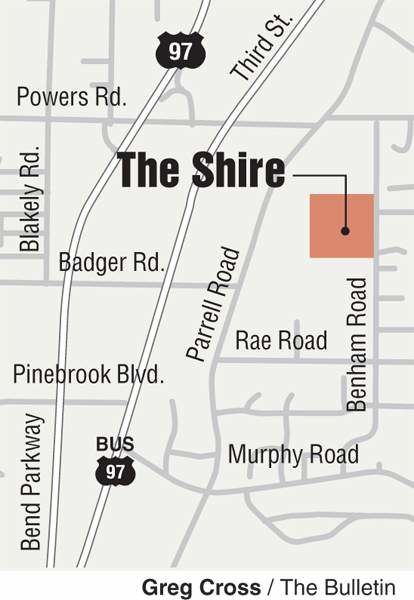For developers of Bends Shire, dream is over
Published 5:00 am Thursday, July 31, 2008

- For developers of Bends Shire, dream is over
The rise and fall of Bend’s real estate economy has resulted in foreclosure proceedings against The Shire, a village-themed concept in southeast Bend patterned after J.R.R. Tolkien’s “Lord of the Rings” series.
A notice of default was recorded last week in the Deschutes County Clerk’s Office on the 31-lot development, which had a “Disneyland-like feel” according to one of its developers and was characterized by Old World housing styles and a fantasy setting.
The Shire concept originated with Ron Meyers, who sold his share in the development for an unspecified amount to Dr. Lynn B. McDonald — a former emergency room physician at St. Charles Bend. McDonald died July 7.
“It basically destroyed my life financially, but that’s the price of a dream,” Meyers said. “The development wasn’t able to materialize fast enough before the market crashed.”
McDonald and his wife, Jan, had taken full ownership of the project in May with the hope they could sell it, Jan McDonald said Wednesday.
Jan McDonald is trying to sell the 14 developed lots, one house and additional land before the 6-acre property goes to public auction in December, she said.
The family owes Umpqua Bank $3.4 million on the project, according to the default notice.
The notice also names Meyers as a guarantor.
“It was Ron’s concept, and it was a good one,” Jan McDonald said. “Had the market not gone to where it went, it had the potential to be successful.”
The project — whose features include unique stonework, artificial thatched roofs, terraced gardens and a network of streams and ponds with a pathway leading to what’s called “The Ring Bearer’s Court” — captured media attention outside Central Oregon, including a December 2006 feature on BBC Radio.
The development drew about 6,000 visitors over two weekends in summer 2006 at the Central Oregon Builders Association’s Tour of Homes and has continued to attract curious onlookers, Meyers said.
Meyers and McDonald drew up a set of rules — similar to codes, covenants and restrictions that govern rules in many subdivisions — and called them the “Declaration of Interdependence.”
“We wanted to create a community — not just another subdivision,” Meyers said.
One home has sold for $650,000 since the project broke ground in fall 2006.
Shire Development acted as developer and builder for the project.
Another home, called Butterfly Cottage, is nearly completed but has not been sold. It’s listed for $899,000. The 3,200-square-foot home overlooks an amphitheater, has 26-foot-high ceilings and interior finishes that include bamboo flooring, a Japanese soaking tub and granite countertops. The house has a “hobbit hole” in the backyard for storing garden supplies.
Both of the homes have artificial thatched roofs and a storybook look that includes dragon-shaped support beams.
The Shire began to unravel in summer 2007 when the subprime mortgage crisis began to dry up credit sources, Meyers said.
“Banks were getting nervous,” Meyers said. “They’re still nervous.”
The dream died for many other reasons, including bad timing, legal challenges with the city of Bend over planning and permit issues, and lack of sales, Meyers said.
“Some people were turned off by living in ‘Disneyland,’” he said. “It’s more of an artists’ community for a certain market segment that wanted something different. There’s been enough people that have come through that would say, ‘What a wonderful concept.’ But then the market crashed, and everyone (went) home.”
If McDonald can’t sell the development, Umpqua will hold an auction at the Deschutes County Courthouse on Dec. 2, according to the default notice.
Umpqua, citing privacy and pending litigation, declined to comment.
Greg Steckler, a designer of the project, is the lone owner of a Shire home, where he lives with his wife and mother-in-law. He calls himself the resident greeter and the resident hobbit, after the joyful characters who occupied a magical village called The Shire in “The Lord of the Rings.”
The development stills draws several curious visitors per day who come to see the unsold home, but has not drawn any buyers, Steckler said.
“People always come back to see what’s happened with the development,” Steckler said. “I’m always sad to tell them, ‘Not much.’”
Questions remain about what will happen if the bank sells the project, if the buyer will continue the original concept, Steckler said.
He and landscaping crews still maintain the diverse plants on the grounds.
“The bank is probably going to discount everything quite heavily,” he said. “Whoever buys, I hope they’re like-minded and want to keep the same theme going. But at the same time, we’re realistic. We might need to make some modifications with the economic climate. In other words, we don’t need to have a thatched roof. But it would be nice if similar architectural styles are kept.”






